Pattern and Decoration: An Ideal Vision in American Art, 1975-1985, at the Hudson River Museum, documents the last genuine art movement of the 20th century, which was also the first and only art movement of the postmodern era and may well prove to be the last art movement ever.
We don't do art movements anymore. We do brand names (Neo-Geo); we do promotional drives ("Painting is back!"); we do industry trends (art fairs, master's of fine arts students at Chelsea galleries, etc.). But now the market is too large, its mechanism too corporate, its dependence on instant stars and products too strong to support the kind of collective thinking and sustained application of thought that have defined movements as such.
Pattern and Decoration, known as P&D, was the real thing. The artists were friends, friends of friends or students of friends. Most were painters, with distinctive styles but similar interests and experiences. All had had exposure to, if not immersion in, the liberation politics of the 1960s and early 1970s, notably feminism. All were alienated by dominant movements like Minimalism.
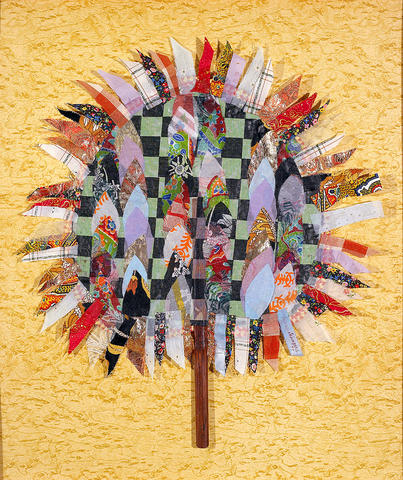
PHOTO: NY TIMES NEWS SERVICE
They were also acutely aware of the universe of cultures that lay beyond or beneath Euro-American horizons, and of the alternative models they offered for art. Varieties of art from Asia, Africa and the Middle East, as well as folk traditions in the West, blurred distinctions between art and design, high and low, object and idea. They used abstract design as a primary form and ornament as an end in itself. They took beauty, whatever that meant, as a given.
P&D artists were scattered geographically. Some - Robert Kushner, Kim MacConnel, Miriam Schapiro - were in California. Others - Cynthia Carlson, Brad Davis, Valerie Jaudon, Jane Kaufman, Joyce Kozloff, Tony Robbin, Ned Smyth, Robert Zakanitch - were in New York. As a group they found an eloquent advocate in the critic and historian Amy Goldin, who was immersed in the study of Islamic art. And they had an early commercial outlet in the Holly Solomon Gallery in SoHo.
They all asked the same basic question: When faced with a big, blank, obstructing Minimalist wall, too tall, wide and firmly in place to get over or around, what do you do? And they answered: You paint it in bright patterns, or hang pretty pictures on it, or drape it with spangled light-catching fabrics. The wall may eventually collapse under the accumulated decorative weight. But at least it will look great.
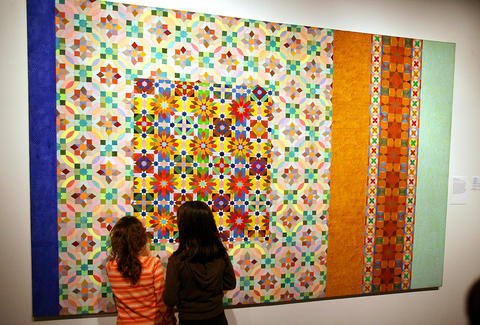
PHOTO: NY TIMES NEWS SERVICE
And where do you find your patterns and pictures and fabrics? In places where Modernism had rarely looked before: in quilts and wallpapers and printed fabrics; in Art Deco glassware and Victorian valentines. You might take the search far afield, as most of these artists did.
They looked at Roman and Byzantine mosaics in Italy and Islamic tiles in Spain and North Africa. They went to Turkey for flower-covered embroideries, to Iran and India for carpets and miniatures and to Manhattan's Lower East Side for knockoffs of these. Then they took everything back to their studios and made a new art from it.
Kaufman turned 19th-century American quilt designs into abstract nocturnes glinting with sewn-on beads. Zakanitch went for flowers in monumental paintings based on fabrics remembered from his childhood home in New Jersey. Schapiro also drew on floral images in a type of feminist-inspired collage she called "femmage." And in her Gates of Paradise she applied domestic craft materials - lace, ribbons, fabric trim and so on - to a theme associated with Lorenzo Ghiberti.
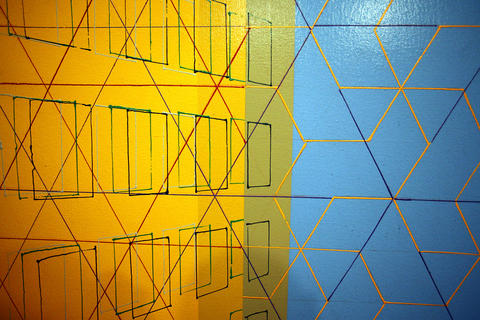
PHOTO: NY TIMES NEWS SERVICE
Carlson's all-over tweedlike patterns, done with repeated strokes of thick paint, are less specific in their references. And even if Jaudon doesn't insist on Islamic art as a source for her crisp interlace designs, it surely had some effect. Kozloff is forthright about the debt she owes to Moroccan and Mexican tile work. Her melding of brilliant colors with a basic Minimalist grid has yielded generous results in public architectural projects, and in her poetic and intensely political recent art.
Davis and Smyth lie a little outside the general P&D loop, one doing figurative work and the other mosaics. Robbin, who lived in Iran as a child, conflates geometric Persian motifs with others from Japanese silk kimonos. For MacConnel and Kushner, textiles themselves are a primary medium.
MacConnel glues pieces of Near Eastern and Southeast Asian fabric together into suspended open-work hangings. Kushner, who studied with MacConnel and traveled with Goldin to the Middle East, originally draped his painted fabric pieces over his own body in performances. One festive piece in the show, Visions Beyond the Pearly Curtain, is shaped like a chador, cape or kimono, although with its gathered swags and melon-orange curlicues it has the theatrical punch of a rococo opera curtain about to rise.
When Kushner finished this piece in 1975, P&D was taking off. It had avid collectors in the US; in Europe it was a hit. Then interest dried up. Worse than that, in the US, the movement became an object of disdain and dismissal.
There were reasons. Art associated with feminism has always had a hostile press. And there was the beauty thing. In the neo-Expressionist, neo-Conceptualist late 1980s, no one knew what to make of hearts, Turkish flowers, wallpaper and arabesques.
Thanks to multiculturalism and identity politics, we know better what to make of them now; the art world's horizons are immeasurably wider than they were two decades ago (without being all that wide). Besides, to my eye, most P&D art isn't beautiful and never was, not in any classical way. It's funky, funny, fussy, perverse, obsessive, riotous, accumulative, awkward, hypnotic, all evident even in the fairly tame selections by Anne Swartz, the curator for this show.
And not-quite-beauty is exactly what saved it, what gave it weight, weight enough to bring down the great Western Minimalist wall for a while and bring the rest of the world in. Let the art historical record show, in the post-movement future, the continuing debt we owe it for that.
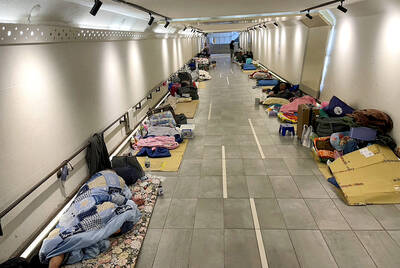
From the last quarter of 2001, research shows that real housing prices nearly tripled (before a 2012 law to enforce housing price registration, researchers tracked a few large real estate firms to estimate housing price behavior). Incomes have not kept pace, though this has not yet led to defaults. Instead, an increasing chunk of household income goes to mortgage payments. This suggests that even if incomes grow, the mortgage squeeze will still make voters feel like their paychecks won’t stretch to cover expenses. The housing price rises in the last two decades are now driving higher rents. The rental market
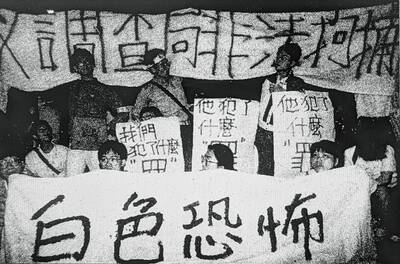
July 21 to July 27 If the “Taiwan Independence Association” (TIA) incident had happened four years earlier, it probably wouldn’t have caused much of an uproar. But the arrest of four young suspected independence activists in the early hours of May 9, 1991, sparked outrage, with many denouncing it as a return to the White Terror — a time when anyone could be detained for suspected seditious activity. Not only had martial law been lifted in 1987, just days earlier on May 1, the government had abolished the Temporary Provisions Effective During the Period of National Mobilization for Suppression of the Communist

When life gives you trees, make paper. That was one of the first thoughts to cross my mind as I explored what’s now called Chung Hsing Cultural and Creative Park (中興文化創意園區, CHCCP) in Yilan County’s Wujie Township (五結). Northeast Taiwan boasts an abundance of forest resources. Yilan County is home to both Taipingshan National Forest Recreation Area (太平山國家森林遊樂區) — by far the largest reserve of its kind in the country — and Makauy Ecological Park (馬告生態園區, see “Towering trees and a tranquil lake” in the May 13, 2022 edition of this newspaper). So it was inevitable that industrial-scale paper making would
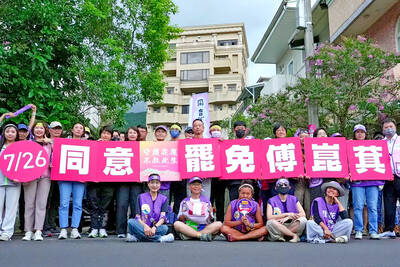
Hualien lawmaker Fu Kun-chi (傅?萁) is the prime target of the recall campaigns. They want to bring him and everything he represents crashing down. This is an existential test for Fu and a critical symbolic test for the campaigners. It is also a crucial test for both the Chinese Nationalist Party (KMT) and a personal one for party Chairman Eric Chu (朱立倫). Why is Fu such a lightning rod? LOCAL LORD At the dawn of the 2020s, Fu, running as an independent candidate, beat incumbent Democratic Progressive Party (DPP) lawmaker Hsiao Bi-khim (蕭美琴) and a KMT candidate to return to the legislature representing